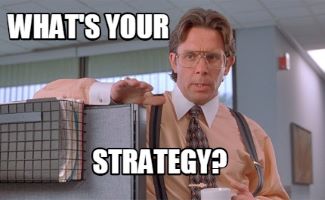Understanding Website Conversion Rate Optimization (CRO)
Website Conversion Rate Optimization (CRO) is the process of increasing the percentage of website visitors who complete a desired action—such as making a purchase, signing up for a newsletter, or requesting a quote. It involves analyzing user behavior, testing changes, and improving the overall site experience to encourage more conversions.
Example in a Sentence:
By conducting A/B tests and removing friction from the sign-up flow, the company boosted its website conversion rate by over 30%.

Why Website Conversion Rate Optimization Matters
CRO is more than just a technical process—it’s a revenue strategy that transforms your existing traffic into actual results. Here’s why it’s essential:
- Higher ROI: Make more from your current traffic instead of increasing ad spend.
- Better User Experience: Improve satisfaction, trust, and ease of navigation.
- Sustainable Growth: Small tweaks can lead to long-term performance improvements.
- Competitive Edge: High-performing websites convert more, giving you an advantage in any industry.
Why Website Conversion Rate Optimization Matters
CRO is more than just a technical process—it’s a revenue strategy that transforms your existing traffic into actual results. Here’s why it’s essential:
- Higher ROI: Make more from your current traffic instead of increasing ad spend.
- Better User Experience: Improve satisfaction, trust, and ease of navigation.
- Sustainable Growth: Small tweaks can lead to long-term performance improvements.
- Competitive Edge: High-performing websites convert more, giving you an advantage in any industry.
Best Practices
1. Set Clear Conversion Goals
Define what counts as a “conversion” for your business—form fills, demo requests, sales—and track those using tools like Google Analytics.
2. Run A/B Tests
Experiment with different page layouts, CTA copy, and images. Measure which variations drive better results.
3. Speed Up Your Site
Page speed directly affects conversion. Use tools like Google PageSpeed Insights to identify and fix slowdowns.
4. Use Compelling CTAs
Use clear, action-oriented language like “Get Started,” “Claim Your Offer,” or “Book a Demo.”
5. Simplify the User Journey
Keep navigation clean and intuitive. Eliminate unnecessary steps between landing and conversion.
6. Add Social Proof
Incorporate testimonials, reviews, or case studies to reduce hesitation and build trust.
7. Use Heatmaps and Analytics
Tools like Hotjar or Microsoft Clarity reveal where users click, scroll, or drop off—helping you make better design decisions.
More Definitions
(From the Sales & Marketing Jargon Encyclopedia)
- Base Conversion Rate – The benchmark percentage of users who convert before any optimization is applied.
- Click-Through Funnel – A structured series of pages or messages that guide a visitor toward a conversion.
- Conversion Funnel Design – The intentional design of paths users follow on your site to increase conversion likelihood.
- Zero-Click Search Results – SERP features that provide answers instantly, without needing a website click.
Useful Posts
(From the Sales Funnel Professor Blog)
- 👉 Understanding B2B Sales Funnels: Definitions and Examples
Learn how sales funnels work in a B2B context and how to optimize them for better conversion. - 👉 Go High Level vs HubSpot: Our Take
A deep dive into two leading CRMs and their impact on managing and converting leads.













